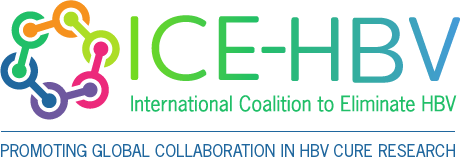Dr John Martin, former CEO of Gilead Sciences and Founding Director of the John C.Martin Foundation, died unexpectedly on March 30, aged only 69. With his passing , the world lost a truly great and remarkable human being who contributed so much to the overall benefit of our human kind. Much has been written about John in the last 4 weeks concerning his outstanding scientific, philanthropic and business achievements and contributions, but the leadership group at ICE-HBV asked me to pen a personal view of John in order to communicate and highlight his other less well known but equally laudable achievements; hence the title, connecting all the dots, because John amazingly found the time to also be a great mentor as well as inventor and humanitarian, and all the while using that immense store of common sense he possessed.
I first met John in 1989 at one of the Keystone Symposia meetings on Frontiers in HIV Pathogenesis which was also hosting a satellite meeting on “Animal Models for Antiviral Drug Development”. I had a poster presentation on the first use of ganciclovir to treat chronic hepatitis B (CHB). Our group at VIDRL had demonstrated significant anti-HBV activity with ganciclovir when used to treat CMV co-infections in HIV-HBV co-infected injecting drug-users. I must admit that there was not much interest in the poster until John passed by, introduced himself, and then spent some time going through the data, constructively sharing his obvious immense knowledge with me. At the end of the session, John disclosed that he was the inventor of ganciclovir when he was at Syntex Pharma in 1982, but that he was no longer at Syntex and was presently working at Bristol-Myers-Squib (BMS). He promised to send me some key papers on the biochemical properties and metabolism of ganciclovir that could possibly help to explain the variability in antiviral responses of ganciclovir that we were observing in the clinic. By the time I made it back to the lab (VIDRL) in Melbourne, a parcel containing eight articles on purine metabolism including ganciclovir, was already sitting on my desk; John had sent them by express post, thereby keeping his promise to help in our ongoing studies to identify HBV antivirals. This introduction to John confirmed my first positive impressions about John back at Keystone, that he was a person who kept his word, was prepared to just help in any way he could and that as an individual he was dedicated to driving the field of antivirals forward based on scientific endeavour in order to better understand how antiviral agents interact with the virus and the host.
The next year, in 1990, John moved to Gilead as vice-president of research and development, beginning three decades of scientific collaboration between my lab group at VIDRL and Gilead on studying the anti-HBV activity of the acyclic nucleoside phosphonates (ANP) adefovir and tenofovir . John enthusiastically encouraged us to delve deeply into how the ANPs inhibited HBV in vitro, in vivo and in the clinic and fully supported studies into antiviral drug resistance and cross-resistance, teaching us that such studies provided unique insights into mechanism of action.
Coupled to his scientific drive, John had an abundance of commercial common sense. He could see synergy when most others could not, including myself. He was also a visionary. In the late 1990s, I was on the scientific advisory board of Gilead and another HIV-HBV company, Triangle Pharmaceuticals. Triangle was a spin off from the Wellcome group in Research Triangle Park , North Carolina, following its takeover by Glaxo in 1995. Triangle had a number of HIV and HBV antivirals including emtricitabine (FTC) and the company was exploring ways to develop it clinically, mainly as monotherapy. With both HIV and HBV antiviral activity, John saw the opportunity to combine FTC with tenofovir (TDF) and Gilead purchased Triangle; Truvada was soon born. This quickly became the most potent single treatment for HIV (and HBV), laying the foundation for John’s next masterful step into combination therapy, Atripla, a triple combination of Truvada (TDF +FTC) and Efavirenz (BMS) , thereby launching the first successful “One pill once a Day” era in HIV management, reducing the patient’s pill burden and substantially increasing patient compliance. An incredible success that is credited to John. The next breakthrough with these highly potent antivirals, was the prevention of HIV transmission, an approach known as pre-exposure prophylaxis. By 2011, Gilead’s anti-HIV medicines accounted for almost half of the USA market and as CEO, John took the next step in “joining the dots”, and expanded equitable access to Gilead’s anti-HIV medicines in developing countries, mainly based on their gross domestic product. Later on, John showed the same insight and commercial acumen but which was integrated into a humanitarian approach aimed at fair access, with Gilead’s move into hepatitis C. It was here that John’s philanthropy clearly shone through.
John was staunchly committed to philanthropy. He started a Foundation under his name with his life partner Dr Lillian Lou, with the mission to facilitate the establishment of sustainable improvement of health care for populations in “socially and economically disadvantaged settings”. This philosophy readily built on his humanitarian leadership integrated with his unique model of drug access for HIV and HCV medicines that he developed whilst he was at Gilead. He now applied this in particular to HBV and is helping to support the WHO health goals including the prevention of mother-to-child transmission of HBV, as well as other public health imperatives. The Foundation also supports the promotion of community-based healthcare for liver health at the grass roots level through NGOs which assist member states with development of their Action Plans and National Strategies in order to assist Governments to take responsibility and control of their high disease burdens. These activities positively promote the linkage of affected communities with their governments making meaningful partnerships with key control initiatives that otherwise would not have happened without the Foundation’s support.
John’s mantra with me over our 30 year journey was two-fold: to focus on the science and to develop mechanisms to create access to medicines in those countries in the developing world that urgently needed them. With his passing , many tears have been shed and quite rightly so. John had an amazing work ethic and professional success which was unrivalled, combined with humility and dogged perseverance. In these few paragraphs I have tried to capture a snippet of the unparalleled life of John, his contributions to the field of antiviral agents that then translated into remarkable benefits for many millions of patients, allowing many to live normal productive lives instead of succumbing to fatal disease. I feel that with his passing, there has been a “disturbance in the force”, that force of passionate adherence to the values of science, the practice of scientific principles and the commitment of fairness to the world we live in and the peoples we share it with. John, you are already sorely missed.
About the Author: Professor Stephen Locarnini is the Founding Director of the Victorian Infectious Diseases Reference Laboratory (VIDRL) at the Doherty Institute in Melbourne. Stephen is a founding member of ICE-HBV.

